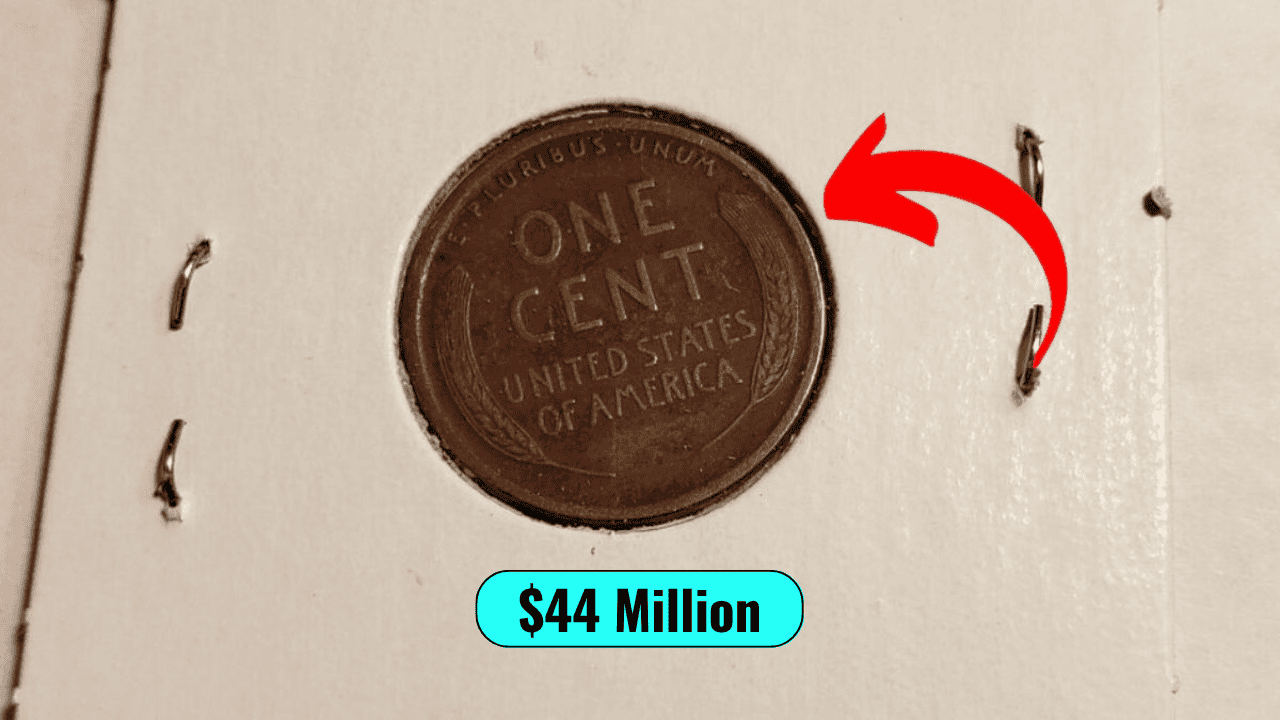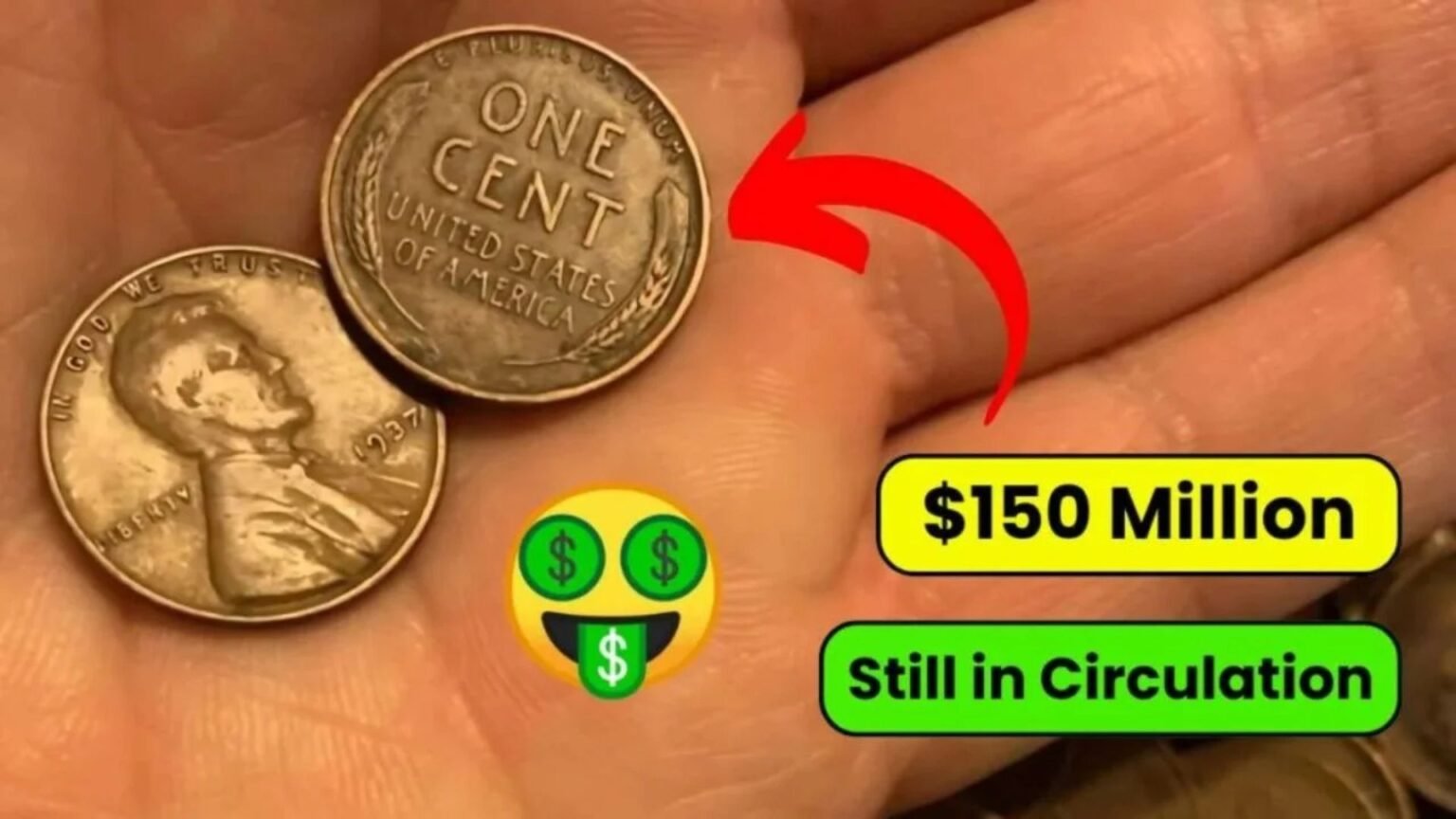Imagine finding a penny that could buy a mansion. The Lincoln Wheat Penny, valued at $44 million, might be hiding in your change. This tiny coin, steeped in history, sparks dreams of striking it rich. Read on to uncover its story, value, and how to spot one.
What Is the Lincoln Wheat Penny?
The Lincoln Wheat Penny is a one-cent coin minted from 1909 to 1958. It features Abraham Lincoln’s profile on the front and two wheat stalks on the back, earning its nickname “Wheat Penny.” While most are worth a cent, rare versions, like the 1943 copper penny, can fetch millions.
This coin’s allure lies in its history and rarity. A minting error during World War II created a handful of ultra-valuable coins. Could one be in your pocket? Let’s dive into its past and why it’s a numismatist’s dream.
The Fascinating History of the Lincoln Wheat Penny
In 1909, the U.S. Mint honored Abraham Lincoln’s centennial birthday with a new penny. Designed by Victor David Brenner, it was the first U.S. coin to feature a real person, replacing symbolic Liberty images. The reverse showcased wheat stalks, symbolizing prosperity.
During World War II, copper was scarce, so 1943 pennies were made from zinc-coated steel. By mistake, a few copper planchets were used, creating the rare 1943 copper penny. Only 15-20 are known to exist, making them numismatic treasures.
Why Is This Penny Worth $44 Million?
The $44 million valuation often tied to the 1943 copper Lincoln Wheat Penny stems from its rarity, historical significance, and auction hype. While the highest recorded sale was $1.7 million in 2010, experts speculate a pristine specimen could fetch far more today.
Here’s why it’s valuable:
- Rarity: Fewer than 20 authentic 1943 copper pennies exist.
- Minting Error: Copper was accidentally used instead of steel.
- Condition: Pristine coins command higher prices.
- Historical Context: A wartime mistake adds allure.
The $44 million figure may be exaggerated, but even lower estimates like $3.3 million make it a collector’s holy grail.
Key Factors Driving Lincoln Wheat Penny Value
| Factor | Description | Impact on Value |
|---|---|---|
| Rarity | Only 15-20 1943 copper pennies exist | Extremely High |
| Minting Error | Copper used instead of steel in 1943 | Skyrockets Value |
| Condition | Mint state with no wear | Increases Significantly |
| Historical Context | WWII-era mistake | Adds Collectible Appeal |
How to Spot a Rare Lincoln Wheat Penny
Think you’ve got a valuable penny? Here’s how to check:
- Date: Look for “1943” on the coin.
- Color: Copper pennies are reddish-brown, not silver like steel ones.
- Magnet Test: Copper isn’t magnetic; steel sticks to a magnet.
- Weight: Copper pennies weigh 3.11 grams; steel ones weigh 2.7 grams.
- Mint Mark: Check for “D” (Denver), “S” (San Francisco), or none (Philadelphia).
If your penny passes these tests, don’t clean it! Contact a professional grader like PCGS or NGC for authentication.
Where to Find Them
Rare pennies might turn up in:
- Coin jars or piggy banks
- Bank rolls of old pennies
- Estate sales or flea markets
- Pocket change (rare but possible)
The thrill of the hunt keeps collectors searching. One lucky find could change your life.
Notable Lincoln Wheat Penny Records
The 1943 copper penny isn’t the only valuable Wheat Penny. Here are other notable rarities:
Top Valuable Lincoln Wheat Pennies
| Year & Type | Estimated Value | Notes |
|---|---|---|
| 1943 Copper Penny | Up to $3.3M+ | Rare wartime error |
| 1909-S VDB | Up to $3M | Low mintage, designer initials |
| 1914-D | Up to $3M | Scarce Denver issue |
| 1955 Doubled Die | Up to $200K | Visible doubling on text |
| 1922 No D | Up to $500K | Missing Denver mint mark |
The 1943-D copper penny sold for $1.7 million in 2010, but recent claims suggest values could climb higher. No penny has hit $44 million, but the dream persists.
Expert Tips for Coin Collectors
Ready to start your numismatic journey? Here’s expert advice:
- Never Clean Coins: Cleaning removes valuable patina, slashing worth.
- Use Proper Storage: Store coins in protective holders or sleeves.
- Authenticate Early: Get rare finds graded by PCGS or NGC.
- Research Values: Check auction records or guides like the Red Book.
- Join Communities: Connect with collectors at coin shows or online forums.
Numismatics is a rewarding hobby. Even common Wheat Pennies can be worth more than face value, making every coin jar a potential treasure chest.
Frequently Asked Questions
Is the $44 million Lincoln Wheat Penny real?
The $44 million figure is likely exaggerated. The 1943 copper penny has sold for up to $1.7 million, with estimates suggesting higher values for pristine examples.
Can I find a rare penny in circulation?
Yes, though rare. Wheat Pennies occasionally appear in change, coin rolls, or old collections.
How do I know if my 1943 penny is copper?
Check the color (reddish-brown), weight (3.11 grams), and use a magnet (copper won’t stick).
What should I do if I find a rare penny?
Don’t clean it. Contact a professional grader like PCGS or NGC for authentication.
Are other Wheat Pennies valuable?
Yes, coins like the 1909-S VDB or 1914-D can fetch thousands or millions in top condition.
Conclusion
The Lincoln Wheat Penny, especially the 1943 copper version, is more than a coin—it’s a piece of American history with life-changing potential. While a $44 million penny may be a stretch, values in the millions are real for rare finds. Start checking your change, coin jars, or old collections. You might uncover a numismatic gem. Share this post with fellow collectors, and let us know in the comments if you’ve found a Wheat Penny worth keeping!






